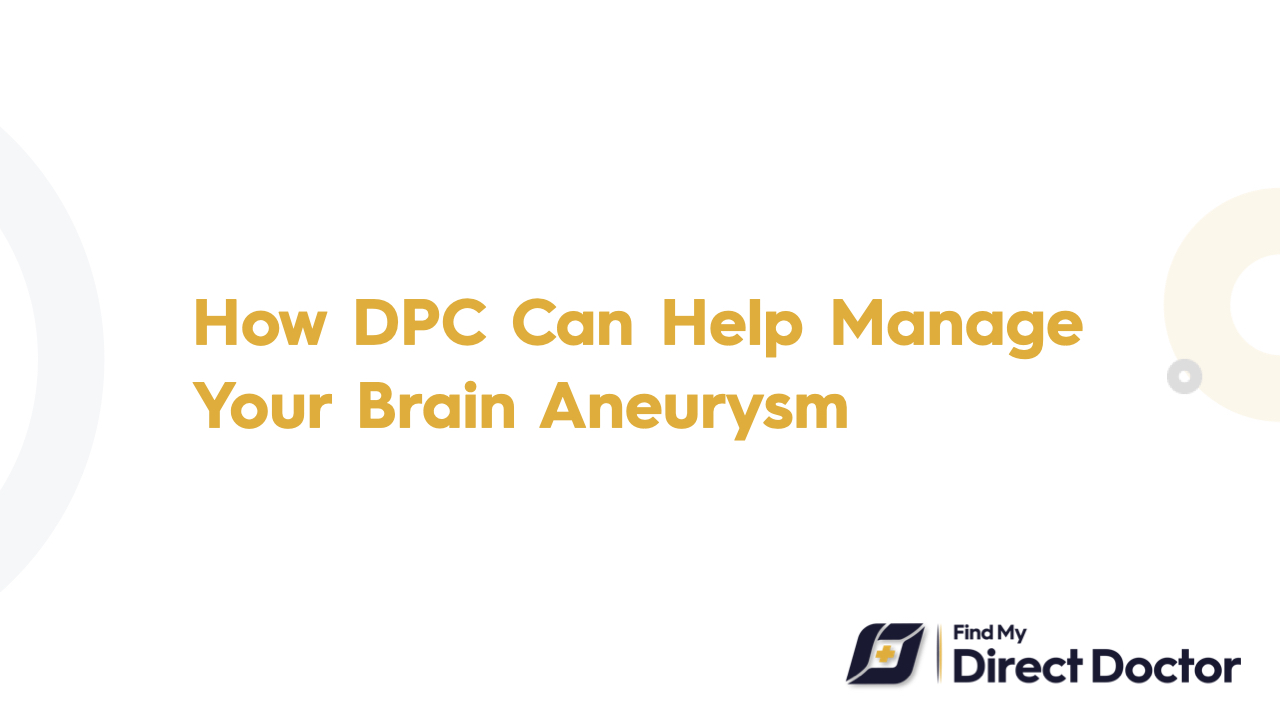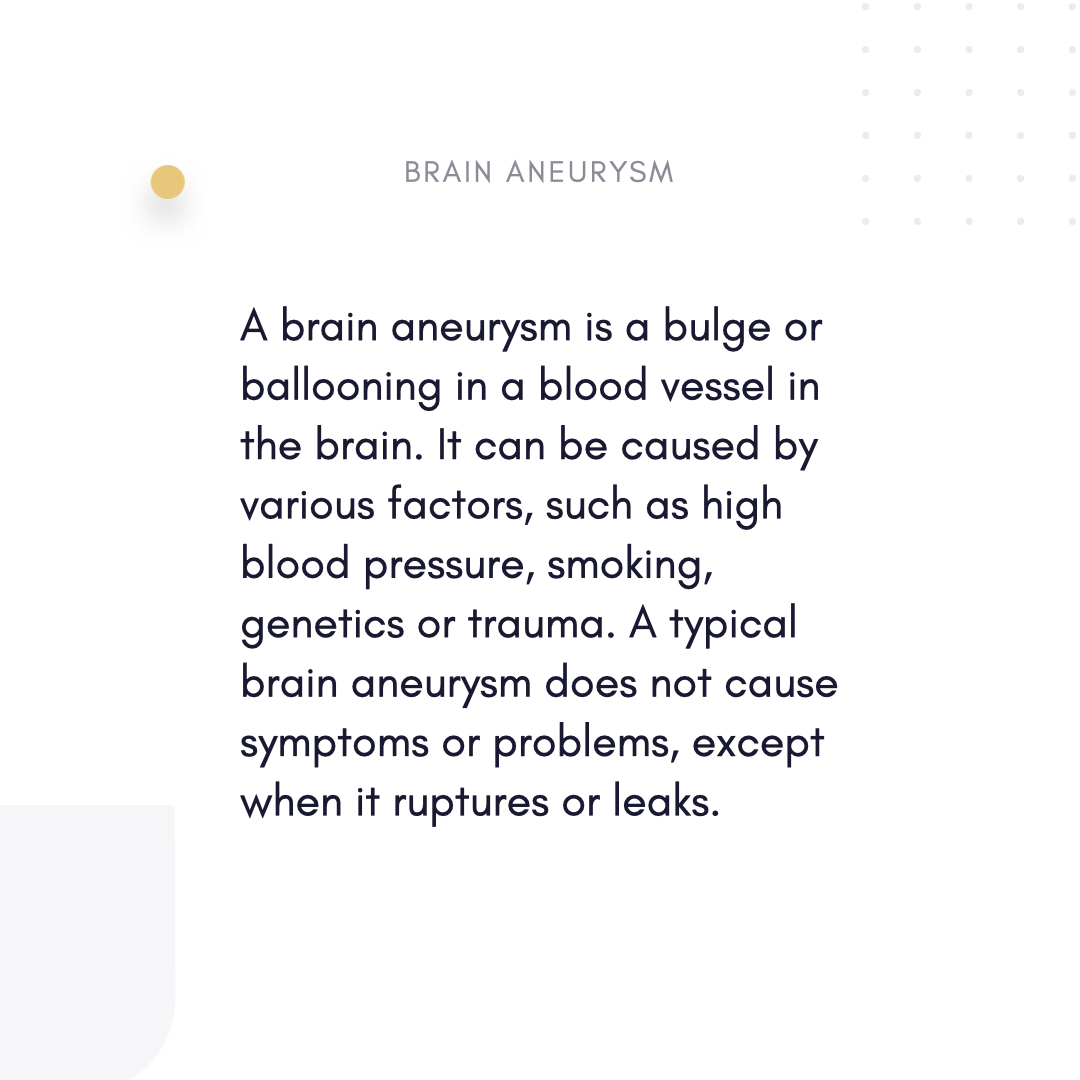Direct Primary Care (DPC) for Brain Aneurysm Management: Proactive, Personalized Care for Lifelong Health
A brain aneurysm, a weak bulge in a brain artery, can remain silent or rupture catastrophically producing life-threatening bleeding. By early detection, continuous monitoring, and seamless coordination with experts, Direct Primary Care (DPC) transforms an aneurysm care offering patients accessibility, affordability, and individualized support to reduce risks and optimize outcomes.

Early Risk Management and Detection
- Quick Symptom Review:
- Patients with sudden "thunderclap" headaches, vision changes, or neurological deficits—e.g., drooping eyelids—get same-day evaluations to rule out rupture.
- Coordinating imaging: For high-risk patients—family history, hypertension, smokers—help with quick CT scans or MRAs to find unruptured aneurysms early on.
- Professional Cooperation: Neurologist/Neurosurgeon:
- Simplify visits for an aneurysm needing monitoring or intervention (coiling, clipping).
- Use size/location information to guide therapy per recommendations, so avoiding needless treatments for stable aneurysms.
- Strategies for Prevention:
- Control of Pressure: Medications, low-sodium diets, and stress-reducing strategies—such as mindfulness—help you tightly control BP.
- Provide specific tools (patches, counseling) to remove this important modifiable risk from smoking.
DPC Personalized Brain Aneurysm Management
- Track an aneurysm stability by planned MRAs/CT angiography, so lowering radiation exposure wherever feasible.
- Customize plans for diet, exercise, and alcohol moderation to reduce rupture risks in your lifestyle.
- Following coiling or surgery, look for vasospasm, hydrocephalus, or cognitive changes.
- Work with occupational or physical therapists to address speech problems or motor deficits.
- Family and Genetic Treatment:
- Test for disorders like polycystic kidney disease and counsel families on early identification of inherited risk.
- Advocate for relatives of an aneurysm sufferers to have baseline vascular studies.
Why DPC Shines in Treatment of Brain Aneurysms?
- Accessibility Presaves Life:
- Same-day evaluations for warning signs—such as sudden headaches—help to minimize delays in ruptural diagnosis.
- Direct interaction with your provider guarantees quick imaging or specialized referrals.
- Cost Transparency & Continuity:
- Affordable Monitoring: Usually covering care coordination and preventative visits, membership helps to avoid surprise bills.
- Help with costs of genetic tests, high-resolution imaging, or rehabilitation programs.
- Comprehensive Risk Reduction:
- Use yoga, therapy, or biofeedback to help with stress-induced hypertension.
- Simplify regimens and track side effects of antihypertensives or statins in your medication adherence.
The DPC Advantage for Patients with Brain Aneurysm
- GuidelineAligned Care: Working with neurovascular experts, follow evidence-based guidelines for intervention and monitoring.
- Patient Instruction: Teach emergency response techniques and red flag awareness—that is, neck stiffness, seizures.
- Perfect coordination guarantees quick changes between surgeons, primary care, and rehabilitation teams.
Final Thoughts
An aneurysm in the brain calls for both accuracy and alertness. By providing individualized support for unruptured aneurysms and post-treatment recovery, DPC's model crosses long-term management and emergency care. DPC offers high-risk patients continuity, cost clarity, and preventative strategies—turning a possibly fatal diagnosis into a well controlled journey.






